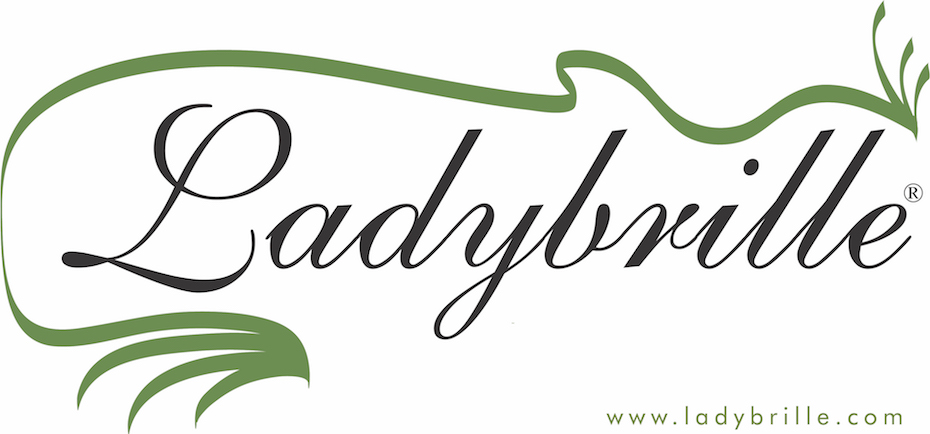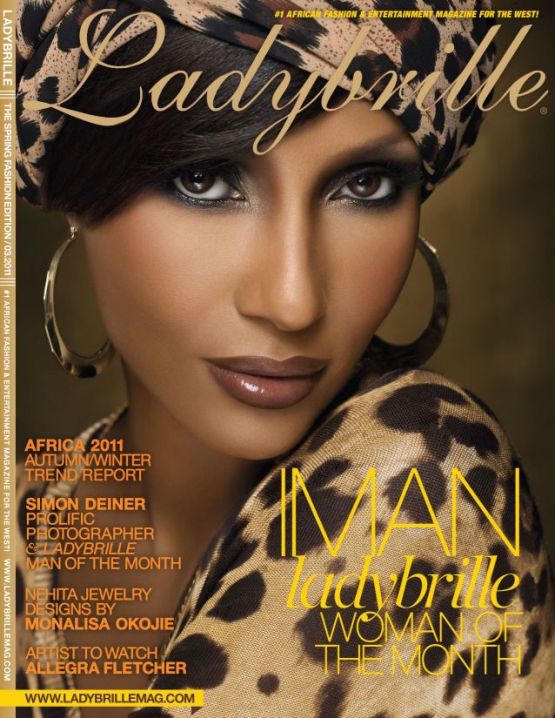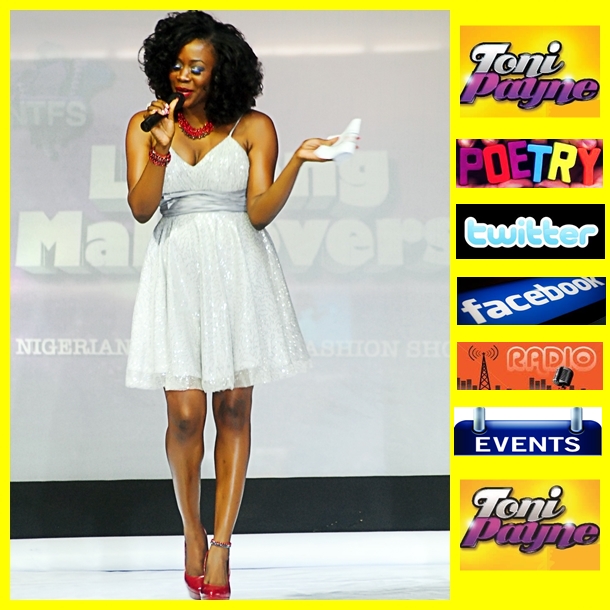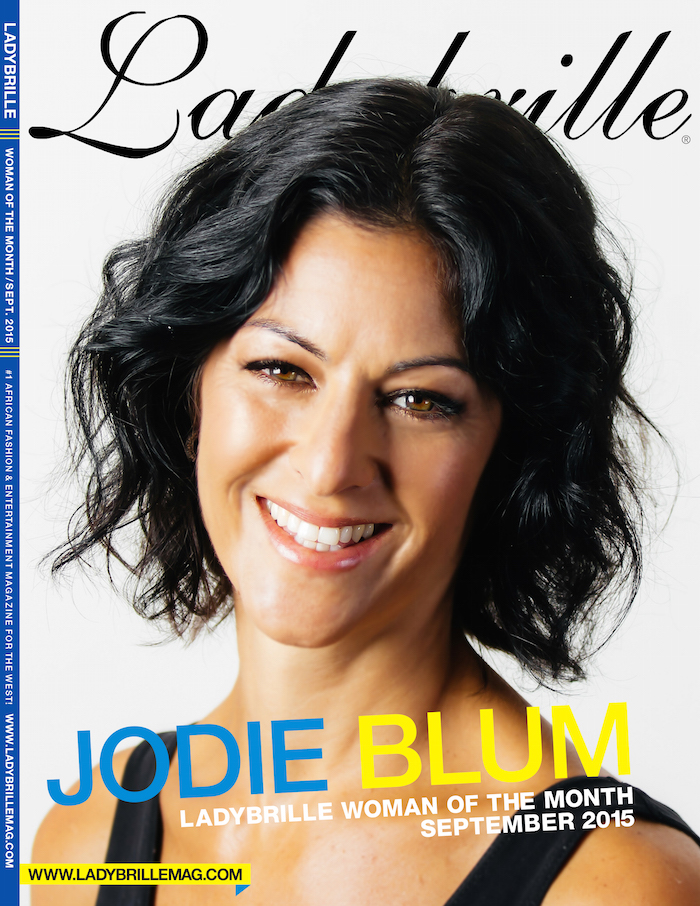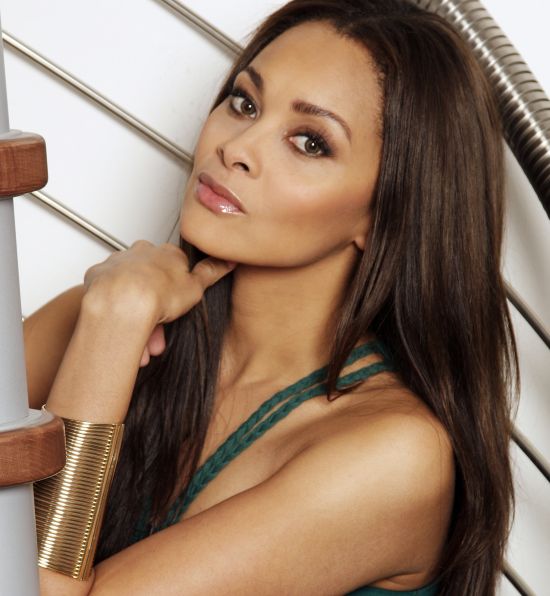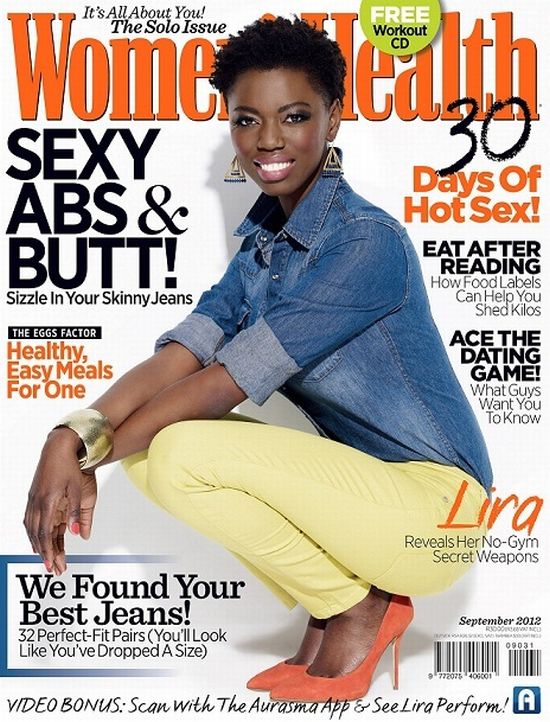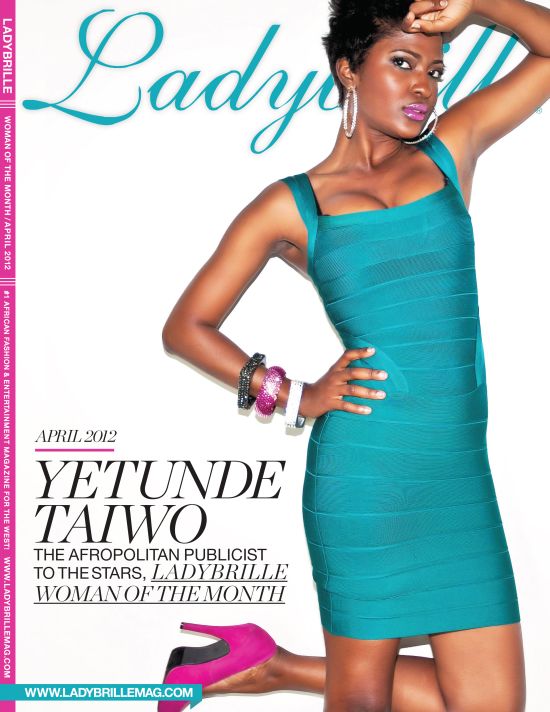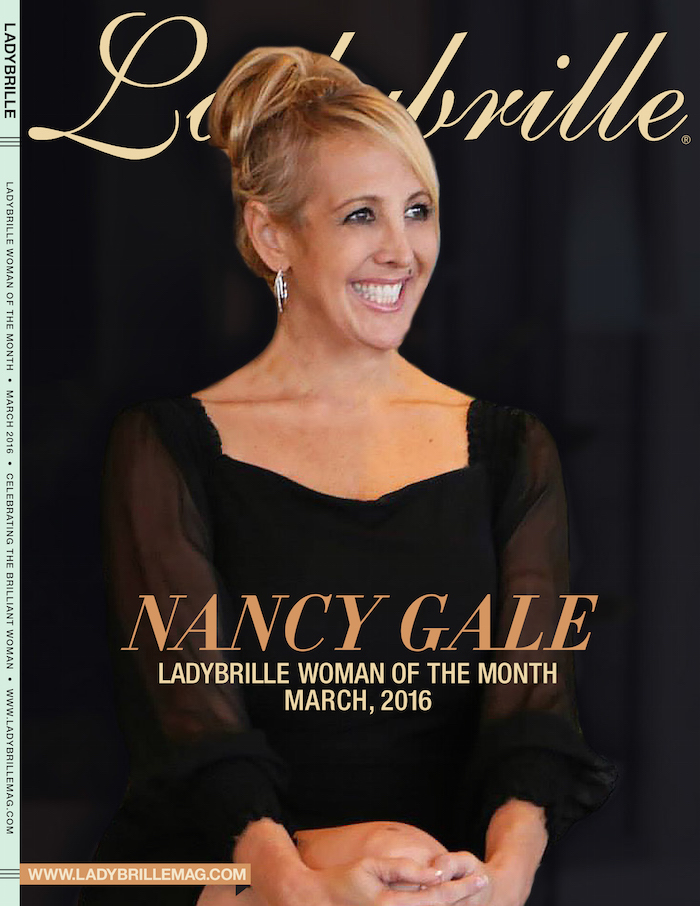“I“MAN is a fashion icon, a business mogul, an activist and humanitarian. Her success has inspired millions of young girls, globally, who now believe they can be just as successful because IMAN is successful. Ladybrille Magazine had the honor and pleasure of interviewing IMAN, our March 2011 Woman of the Month, in this exclusive where we cover almost everything from black models in the industry to her business portfolios and finally Africa as fashion’s new frontier! Enjoy and share.
LADYBRILLEmag.com. (First), I want to sincerely congratulate you for being honored as fashion icon by the Council of Fashion Designers of America (CFDA). Oh you looked gorjjjj (at the event)!
IMAN: I was taken by surprise because first of all, it’s not a yearly category, they’ve only done it five times. I’m the fifth woman that they have given it to. I’m the first black woman, but I’m the fifth woman period that they’ve given it too. There’s no rhyme and reason where they give it. The designers decide it, they decide who has really had longevity and has really sustained an iconic power in terms of style and it was my year and I was totally surprised I have to tell you. I was beyond surprised because I know the fashion people. They’re very very critical. It doesn’t come that easy and the group I was with (included) Nicole Kidman, Sarah Jessica Parker (and) Kate Moss. [O]n top of that, I got the Barney’s window when they were celebrating my CFDA icon award. Barneys gave me two windows! They’ve never given anyone that. Even when they did Madonna they (gave) her one window. They (gave) me two windows of my pictures and statements/quotes from Oprah to the mayor, to Tyra Banks, to Naomi to Dolce Gabbana. I was beyond touched, beyond touched.
LADYBRILLEmag.com: (It was nice to watch).You recently attended the house of Versailles model tribute last month in New York, what was your experience at the tribute like?
IMAN: Oh my God! [I] think every black model or designer or anybody in fashion has heard about this but there were never like video footage. You’ve seen only (very few) pictures of it. So each one of us, in our heads, have a different movie playing because there is nothing to actually see. . . Pat (Cleveland) I know very well and Alva (Chinn) I knew well but I haven’t seen them for a while but I see Bethann all the time. But to (see) Billie Blair who I haven’t seen since I started modeling and the other ones I have never met before was inspiring and (the) tribute was about time. (Also), you know what the great thing was at the tribute; there was Oscar de la Renta, Steven Burrows, Donna Karan who (u)sed to work with Anne Klein (as) a dresser. . .(and) what everybody remembered and (said) was that American fashion totally won because of the girls. It wasn’t about the clothes. It was about the models (that) were there, and the models were those girls. The black models! (The tribute) was about time. It was long overdue.
LADYBRILLEmag.com: Define a fashion icon?
IMAN: . . .“In a world full of trends, I remain a classic.” [I] can’t compete with the Jonses.’ There’s always a prettier girl, there will always be the girl who’s wearing the newest thing, but I’m always me and that has sustained me.
LADYBRILLEmag.com: Just last month, you were honored by BET at the 4th Annual BET Honors when you received the Service Award for all of your humanitarian work. Describe your feelings about that?
IMAN: Well first of all, it’s BET and there is nothing higher than an honor bestowed upon you by your own community. It’s bigger for me than (being called) a fashion icon. It’s from my own community. (Also it) is for charitable work so obviously you feel that somebody is listening and then you now have a captive audience that you can tell them what you actually do.
(For) BET Honors, and this year specifically, (my focus) is on an organization called ‘Raise Hope for Congo.’ [T]he biggest genocide and rape of women and girls in the world is happening in Congo right now and the reason is that militias are mining for minerals. (Greed for Congo’s mineral wealth has been a prime cause of the atrocities and conflict, and multiple armed groups use mass rape as a deliberate strategy to intimidate and control communities as they profit from the illicit trade in Congo’s conflict minerals – tin, tungsten, tantalum, and gold. Many of these same conflict minerals end up in our own electronic devices such as cell phones, laptops, and digital cameras.) Those (m)inerals are the minerals we use in our cell phones, I-pods, computers etc. My intention is taking this all the way to the capital (congress). . .(switches thought) Remember when people were saying you have to have a certificate that says that these diamonds were not blood diamonds, right? So that’s what we want, (conflict free cell phones). The amount of money in the West is used for our I-pods and I-phones, and all that. That is why what’s happening in Congo is happening because if that is taken out of the equation and people say we are not going to buy your (cell phones which have the conflict minerals), then things will change.
[I] remember in the 60’s when they (used to) say the revolution will be televised. “I’m hoping that the revolution will be (revitalized).”
IMAN HOME
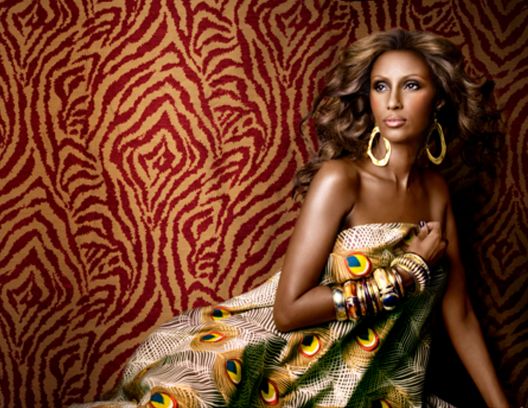
LADYBRILLEmag.com: Let me switch to talking about your newest venture IMAN Home. IMAN Home will soon be open to the world once the official site launches. How would you describe to the world, your brand, IMAN home?
IMAN: It’s available to customers and interior decorators and it is exclusively now sold at Calico Corners and calicocorners.com. Actually, they just told me today [t]hat it exceeded three times their expectations so we are doing the second collections now.
LADYBRILLEmag.com: A few personal favorites from IMAN Home of mine are the Zahra leaf, the Zebra oasis and the Punjab peacock patterns because they display different African elements from exotic wildlife to the calming scenes in the wetlands. What made you want to incorporate African inspired prints into your line of fabrics?
IMAN: [A]frica is not that far from me at any given time. You know (in) my home, I have African sculptures, (r)ugs, prints on the chairs, so it’s never far away from me. I find most of the time, all cultures, regardless whether it’s from Africa or India or Mali or Istanbul, actually don’t clash. They go harmoniously together. And (in) my house, I always have things that I collected from my travels. Because for me, a room is very transportive and it can take you to places maybe that you haven’t had the opportunity to go to. They are great escapes. You know you go outside to the city in the hustle and bustle of New York and then you come to your house and you sit in your study and there is an African rug and an Indian table and all of a sudden you’re somewhere else.
LADYBRILLEmag.com: Let’s talk IMAN cosmetics. [Y]our brand say’s I quote, “this product gives women the power to choose.” Would you say you have redefined cosmetics by actually catering to real women of all shades?
IMAN: When I started IMAN cosmetics in 1994, there was a ton of (media buzz) about multi-cultural and global(ism). (But), at the same time you were not seeing it in terms of beauty and in fashion, you were not seeing it. [T]hey were also saying what’s considered a “woman of color” was only [a] black woman. So, I wanted to change the language of beauty. [I] was majoring in political science before I became a model so when I was thinking of creating this brand, [I] wanted to bring a new language to the (table). [I] was really not talking about the ethnicity of a person. What I was talking about was the skin tones and people couldn’t believe it when I grouped Blacks with Asians.
They said, “Asians are white, so to speak” and I said “No. I mean if you look at a girl from Thailand or from the Phillipines, she could be as dark as I am.” [I] just wanted to bring a new language to the (forefront) and that beauty comes in all kinds of skin tones.
(With) my first campaign, in 1994, I had a Native-American girl in the picture and I struggled with the modeling agencies because I called every modeling agency asking for a Native-American girl and nobody had (one). So I ended up calling the Native American community house in New York and they sent me girls. (It was then) I found a girl and the girl I actually found. I photographed her and (she) was in my campaign. (M)y first campaign in 1994, it was the girl who ended up being the face of Pocahontas when they did the movie. [In] my first campaign, every girl had to be authentic (and a reflection) of where she was from; the same thing with The Beauty of Color, my book. If you look at it, there are blond and blue-eyed but there were also Brazilian or mixed people and that is why in the beauty of color every girl’s photograph there has her name and place of where she comes from, and when you read it, it’s like it’s all over the world.
IMAN TALKS AFRICA AS THE NEW FASHION FRONTIER
LADYBRILLEmag.com: (That makes for a good transition into Africa). African prints and (designs) have evolved from traditional designs into more appealing ones for the Western markets. How do you feel about Africa as the new fashion frontier?
IMAN: Well I think (Africa) (has always been a fashion frontier). Before [p]eople would say I was inspired by my travels to Africa so I brought this print and mixed it with other things and then that print became something else. [B]ut, what is happening now is (p)eople are actually talking boldly about (the use of African prints).
You have Oscar De La Renta who serves women for lunch, then you have Balenciaga who is beyond hip, right? And then you have Duro Olowu, so there is a celebration of it in so many different ways, right? And that’s what’s so beautiful. SUNO looks like it is all African. You know everybody looks like they have a lot African stuff but now they’re calling it ethnic print, and they’re calling it for what it is, ethnic print. . . There is not a season that has passed. . . in the past maybe ten years, that did not have one of (t)hose kind of inspired worldly prints delegated to spring and summer clothes, right? But now, it’s all over . . .
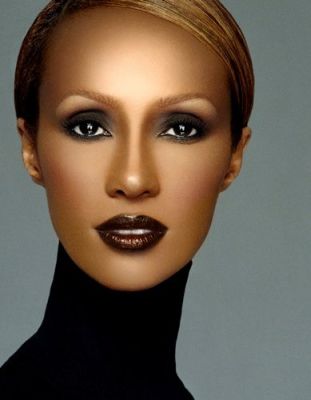 LADYBRILLEmag.com: Name some of your favorite African designers and why?
LADYBRILLEmag.com: Name some of your favorite African designers and why?
IMAN: Duro Olowu is one of my favorites. What I like about Duro Olowu is that [h]e knows an African print but (he) cuts it into jackets that you can wear with jeans, leggings or whatever and in dresses that you could go to the office and that’s actually why a lot of white women gravitate towards (Duro Olowu) because it’s authentic. Authenticity is very important. [O]f course the problem for a designer is how you make it modern so people wear it everyday and everywhere. You don’t want it to be just worn on the weekend. [B]ut you would be able to wear it if you’re going to the office, and you don’t look like your making a statement so to speak. But I think fashion has moved way from that. What’s great about fashion is the mix (and) remixing of things (which) is great.
LADYBRILLEmag.com: What are your thoughts on the future of African fashion and its modeling industry?
IMAN: It will live forever. African (furniture like) stools cannot be more modern than anything in the world, okay. And they can live in any house, whether it’s a Pilatza in Italy, or a hut in Africa. There is nothing more modern than an African stool and African fashion, the Kooba print, you tell me what’s more modern than that? Its geometric, there’s nothing more modern than that, and I’m looking at it, in my study, I have a carpet that I bought (in) Morocco and it is a Kooba fabric and its all straw. It’s the most beautiful thing you’ve ever seen, and so modern, and what is around it? Leather chairs. It couldn’t be more modern, this could go anywhere in the world and it’s still modern. Yeah, so African prints, African sculptures have longevity beyond eternity.
LADYBRILLEmag.com: What inspired the launch of the cosmetic line and what makes it successful?
IMAN: The seed was put in my head in 1975 when I arrived in America. My third day in New York, my first job was with American vogue. At the shoot, there was a Caucasian model and I; and the make-up artist asked me a very weird question and I say weird because he did not address that question to the Caucasian model but only to me. He said, “did you bring your own foundation?” That was in 1975, my 3rd day in New York on my first job for Vogue, okay. Mind you I have never worn makeup in my life, never worn heels in my life; never seen fashion magazines in my life before I arrived, okay? So, I had no concept of what he was talking about. He proceeded to mix something and started putting on my face and when I looked in the mirror I looked grey! I was like, “my God! I don’t look like myself. I look like a Ghost!” I thought maybe magically the camera would do something because surely they won’t photograph me that way with whatever (he) put on my face. I was better without the make-up and what saved my behind was the pictures were in black and white. Because black and white pictures can hide multitude of sins, you can’t see your skin color, it’s all black and white.
But when I left there, because he said foundation so I knew whatever it is, it’s foundation and he said, did you bring it? So the two things that I knew was that he didn’t have it and this is the thing that’s going to make me look like this. So I went and wrote it down. I (then) went with this friend of mine and we went from store to store to from you name it and we picked everything that had a pigment, we just bought everything, every foundation, high end, low end everything that had a pigment, we bought it and then I came home and mixed them to what I thought was closer to my skin. I then put it on and took a Polaroid picture of myself. . .
[A]s a model, my currency is my image. Nobody cares what I look like in real life, but it’s how I photograph. My image is my currency. So I wanted to make sure that day never happened again. So what I did was I mixed what I thought would serve me best and I of course modified as years went by and things came up and I’ll tell you for the 16 years I was a model, I have never went to a shoot without my own foundation in my bag. I will tell you another thing that’s very surprising maybe to your audience is that even today in 2011, there is no self respecting black model from Tyra Banks to Naomi Campbell who would go to a shoot without having her own foundation in her bag just in case that makeup artist doesn’t have the right thing. And so how did I make IMAN cosmetics successful? I knew there were a lot of people in the same boat.
LADYBRILLEMag.com: Ladybrille’s Bola Oyedele wants to meet the businesswoman in you. She asks, “What makes you tick as an entrepreneur?”
IMAN: Change. People are always scared of change. I embrace it. You cannot move forward if you are not willing to embrace change. Don’t be (afraid of change), even if it’s at its worse. If it’s a bad change, its going to be good because it will make you (move) to somewhere that you might not have gone, might not have explored. Bad change makes you rethink your life. [T]he other thing is, find your bliss. You have to find your bliss. What is something that you would do and that you (can) say to (yourself) “I would do this even if I was never paid for it?” But, of course, you better be paid for it. But, what is that thing that you really love very much? You know it because you do it and you do it so well. You’ll be so good at it and it will show the passion and the joy in your face that you cannot bottle up and people will follow you, just for that.
LADYBRILLEmag.com: Speaking of that passion and following your passion, you’ve expanded IMAN Cosmetics into Africa. What made you want to take IMAN Cosmetics to (places like) Nigeria?
IMAN: (Nigerians) have been asking forever and it has been very difficult for us not to be able to do it. It’s because of the taxes. . . it’s been a struggle and somehow distributors worked their magic. But it’s still tough. There are people who will say it’s too expensive. I know, of course I know. But, I couldn’t make it cheaper without diluting the product itself and if I dilute the product then I’m selling you a fake.
LADYBRILLEmag.com: With the lack of Black models in the United States what are your views on the future of the US fashion and modeling industry?
IMAN: It has changed. I think there is definitely big change because of this singular woman, Bethanne Hardison. She pushed it, she voiced it, she made town-hall meetings, talked to designers, put the designers on the spot and then all of a sudden you’re seeing more and more black models being used in the runways and all that. But you know what, that could change in a second. . . [A]t the end of the day, the wish is that they don’t consider us as a category but as human beings. I love the Italian Vogue that was all dedicated to Black Models but there is no reason to do that if you use them on a monthly basis. I don’t want to see one and then everybody goes away (and the industry says), “well oh we did, listen we gave you a whole issue, goodbye!” Treat them like everybody else. If you don’t like a girl, you don’t like a girl. But, don’t say, “we are not seeing black models this season . . .” what the hell does that mean? We are not a category, it’s not like oh we are not doing high heels this season, we are doing certain heels, no it’s not that. We don’t want to be a category. We want to be treated as (h)uman beings.
LADYBRILLEmag.com: European fashion is present worldwide. What do you think the African fashion industry needs to do to make its presence known (on the same scale)?
IMAN: Well it’s very difficult because European and fashion period is really part and parcel of what the government is supporting. The government has to support (the industries) as a legitimate piece of art that they can export and/or import, if nothing else, for the image of those countries. It’s artistic. [L]ets talk about Italy and France. What do they create? They have mills, they have factories, they have all that. (T)hese (African) governments (need to) support (their) designers and communities in fashion . . .not just simple mouth support but financial support. If nothing else it changes the image(s) of (each) country (and the continent) because there is so much beauty. The same thing applies to music and (the) arts. When the government doesn’t support, what happens is all our great people leave and go somewhere else, and other (countries) benefit.
~by Ashley Okonkwo
~Edited by Uduak Oduok
A running feature for 12 years on Ladybrille.com, The ‘Ladybrille Woman of the Month’ celebrates women in business and leadership, who empower themselves and others through their contributions and actions in their local and international communities. In 2014, the feature expanded to include a podcast show. If you would like to nominate a woman to be celebrated, please email [email protected].
